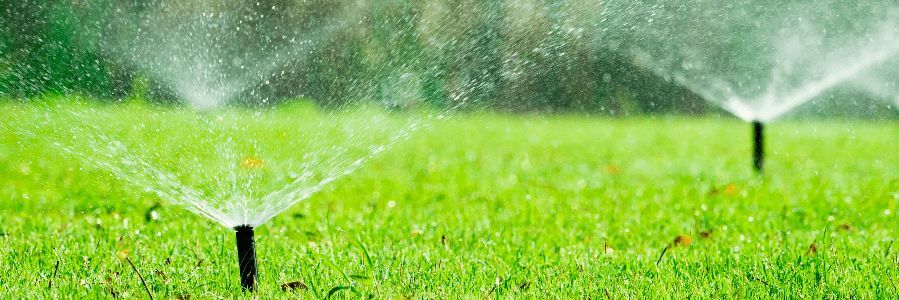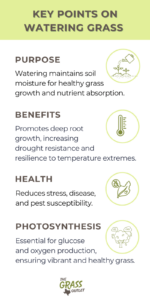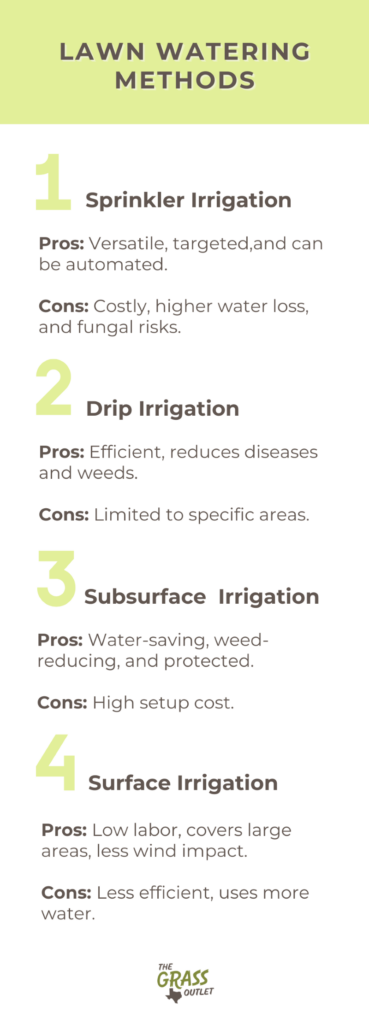Imagine a perfectly green lawn created with love and care. Everything is ready—the grass is planted, the soil is prepared, but now the crucial question arises: How often should the lawn be watered to remain lush and healthy? Even the most beautifully planted grass can lose its vitality without proper watering.
Adequate lawn watering means the grass receives the water it needs for optimal growth. This involves frequent and appropriate watering tailored to the grass’s needs and the climatic conditions where you live.

If you haven’t had the opportunity to learn everything necessary about proper watering schedules in one place, this guide will help you discover:
- What watering the grass means
- The best time for watering
- How often and in what volume watering should be done
- How to create a watering schedule
- What watering methods exist
- How often to water the grass during summer
- The best techniques for watering
Let’s go through all these points together.
What does watering the grass mean, and why is it important?

Why is watering important for grass? Firstly, watering helps maintain an appropriate moisture level in the soil, which allows the grass roots to absorb the water and nutrients necessary for growth. When the lawn receives enough water, the grass roots grow deeper into the ground, making it more resistant to drought and extreme temperatures.
Adequately watered grass is less prone to stress, diseases, and pests, contributing to its resilience and health.
Water is essential for photosynthesis, the process by which plants use sunlight to produce food. Through stomata and small openings on the leaves, grass absorbs carbon dioxide from the atmosphere. At the same time, the grass’s roots draw water from the soil, which is rich in minerals and nutrients. By combining carbon dioxide and water, the plant produces glucose and oxygen. This process slows down or stops without sufficient water, resulting in poor growth and a pale grass appearance.
When is the Best Time to Water the Grass?
The best time to water your grass is early morning, preferably before 10 a.m. Why? Currently, the grass blades are most active and will absorb the water they need. Any excess water will evaporate, leaving the blades sufficiently saturated without causing disease.
Watering in the middle of the day is not recommended because most water evaporates before the plants can absorb it. Also, watering in the evening is not advisable as the lawn will remain wet throughout the night, which can lead to disease.
If you wonder if the grass has not received enough water, you can recognize it by the appearance of brown spots or bare patches in certain lawn parts. In such cases, make your watering cycles more frequent or longer to give the grass enough water.
Tip: The grass should not receive too much water, as it can damage the roots. If this happens, there is a disease risk because oxygen cannot reach the roots due to the excess water. If you notice puddles on the grass, it is a sign that you have given it too much water.
Please do not walk on the grass after it has soaked, as this can cause additional damage. You should avoid walking on it until the first mowing.
How Often to Water the Lawn?
The watering frequency depends on the season, type of grass, and soil type. Generally, the schedule is adjusted according to the weather conditions. During dry and hot summers, typical for places like Texas, you may need to water more than once a week. The common practice is deep watering, not frequent watering. Twice a week should be sufficient.
Avoid overwatering to prevent root rot and diseases. Rotten and weak roots are never a good sign.
During the fall and winter, when rains are frequent, watering is not necessary and can even be counterproductive. Rain provides the needed irrigation and is often more effective than sprinklers.
For grass types, for instance, St. Augustine grass prefers deeper and less frequent watering. It needs water every 5-10 days, depending on the weather and temps (least drought-tolerant). Bermuda grass is the most drought-tolerant variety we carry, and needs to be watered once to twice per week. Zoysia grass requires watering every 10-14 days, depending on weather. It is the most drought-resistant type, thus not demanding in terms of watering.
Generally, warm-season grasses are watered as long as they grow, and they grow best when the temperature exceeds 80 degrees Fahrenheit.
Regarding soil types, if your lawn has clay soil, water it only once or twice a week. Sandy soils cannot retain the total amount of water, so it is recommended that you water them two or three times a week.
What amount of water is sufficient to Water the lawn?
Deep watering is recommended once or twice a week instead of daily shallow watering. This encourages deep rooting and makes the lawn more drought-resistant. On average, watering the yard for 60 to 90 minutes per zone has proven effective, depending on your sprinkler head type.
What amount of water is needed for warm-season grasses? The general advice is to aim for 1 to 1.5 inches of water per week, including rainfall.
To achieve this amount:
- Test how much water your irrigation system delivers.
- Place several empty tuna cans or similar containers around the lawn while your system runs for a specific period (e.g., 15 minutes).
- Measure the depth of water in the containers to determine how long it takes to apply 1 inch of water.
If your irrigation system delivers 0.5 inches of water in 15 minutes, you will need 30 minutes of system operation per zone to apply 1 inch of water to the entire lawn. If you want to provide 1.5 inches of water per week, run each zone’s system for 45 minutes once a week.
The simplest way to determine if the soil is properly watered is to perform the screwdriver test. After watering the lawn, take a long-blade screwdriver and push it straight down into the lawn. The blade should easily penetrate the soil to a depth of 6 inches. If it doesn’t, the soil is hard and dry, and you are not watering enough.
Tip: Adjust your watering schedule based on weather conditions, such as increasing frequency and duration during hot, dry periods and gradually decreasing it as cooler fall and winter days approach.
What Time of Day is Best for Watering?
The best time to water your lawn is before 10 a.m. The lower morning temperatures and gentle breeze reduce evaporation. Morning watering helps keep the lawn cooler during the hottest part of the day, reducing stress on the grass. If you can’t water in the morning, the next best option is late afternoon.
However, be careful not to wait too long. While it might seem logical to water in the evening due to lower temperatures, this can be harmful because the lawn will remain wet overnight, increasing the risk of disease. A wet lawn at night creates ideal conditions for fungal development. Additionally, combining short mowing with nighttime watering is the worst thing you can do for your lawn.
What Methods of Lawn Watering Exist, and What Are Their Advantages and Disadvantages?

Investing in a lawn irrigation system is very important and requires attention. When choosing a particular irrigation system, the following factors are considered: cost, installation, maintenance, and efficiency. The size and location of the lawn will also help determine which irrigation
system is most suitable for you.
Sprinkler Irrigation
This is the most common method of watering grass, where water reaches the grass in a way that mimics rainfall. Water is delivered through a system of pipes, usually pumps, and then sprayed into the air through sprinklers, breaking the water into tiny droplets that fall evenly onto the ground.
Advantages of this method include:
- Versatility for different lawn sizes: Suitable for both large and small areas.
- Targeted watering: Sprinklers can be directed to specific lawn parts, avoiding unnecessary water waste.
- Fertilizer and chemical treatments: Can be applied evenly through the sprinkler system.
- You can also set these on auto-timers
Disadvantages of this method are:
- Costly installation and maintenance: Setting up and maintaining a sprinkler system can be expensive.
- Water loss: Higher water loss due to wind and evaporation.
- Fungal issues: Wet grass blades can lead to the development of fungal diseases.
How Long Should a Sprinkler Run to Deliver 1 Inch of Water?
To achieve 1 inch of water on the lawn (the amount it needs in one week), the sprinkler must run for a certain period, depending on the type of sprinkler and its flow rate. Typically, standard sprinklers must run for about 60 minutes once a week to reach this amount of water.
However, it’s best to set up a container (like a tuna can) to precisely measure the amount of water your sprinkler delivers and adjust the runtime accordingly. Place it near the sprinkler and observe how long it takes to fill up.
Drip Irrigation
The drip irrigation method allows water to slowly drip to the roots of plants through narrow tubes equipped with emitters. This method enables water to be delivered directly to the plant roots. Drip irrigation conserves water and efficiently irrigates non-lawn areas like flower beds, ground covers, street lawns, and vegetable gardens.
Advantages of drip irrigation:
- It saves time, money, labor, and water as the system is very efficient.
- Prevents fungal diseases due to minimal contact of water with leaves, stems, and fruits of plants.
- Reduces weeds because water goes only where it is needed.
- Greater efficiency on uneven terrain.
Subsurface Irrigation
This method of watering is similar to drip irrigation, as it distributes water through pipes and emitters. It was invented in Israel during the 1960s, and it is no coincidence that it was invented there, as water is very scarce in that country. Therefore, this irrigation method is best suited for areas that are dry, hot, windy, or have sandy soils.
Advantages of subsurface irrigation:
- Water savings: Reduces surface water evaporation in hot and dry conditions.
- Weed reduction: Water does not reach the soil surface, where weed seeds typically germinate.
- Animal protection: The system is unlikely to be damaged by animals since it is underground.
Surface Irrigation
This is one of the most common and oldest methods of irrigation. It uses the force of gravity to distribute water, which then penetrates the soil. It is also known as “flood irrigation” because water flows freely. This method is considered the least efficient because there is a tendency to use too much water.
Advantages of surface irrigation:
- Less manual labor: Requires less manual work than sprinklers or moving hoses.
- Better coverage: Covers a large area of land in a shorter period.
- Less affected by wind or sediment: Not as negatively impacted by wind or sediments as other systems.
Best Lawn Sprinklers
On the market, you will find several types, and here are the most common and popular ones:
Spray Sprinklers
This type is most often chosen. Water is sprayed in a fan shape, and the spray pattern depends on the nozzle. These can be nozzles with a short radius, narrow strips, and corners. The downside is that wind affects this type of sprinkler, reducing its efficiency.
These sprinklers are designed to cover small to medium-sized lawns with a precise shape, whether circular, square, or rectangular. They efficiently and quickly provide even water distribution over the target area. Water is distributed from fixed spray sprinklers from a single point and spreads in thin jets that usually reach 1 to 4.5 meters.
If you’re wondering about the spray range, it is typically 40, 90, 180, 210, or 360 degrees. They are often placed near walkways because there is no chance of wetting passersby.
Pop-up Sprinklers
Hidden below ground level when not used, they rise above the surface when activated. They do not obstruct mowing or children’s playtime on the lawn, making this type of sprinkler ideal for gardens and small lawns.
Pop-up sprinklers can be stationary or rotating. Stationary pop-up sprinklers typically spray water within a range of about 4.5 meters, with spray angles from 90 to 180 to 360 degrees. Experts recommend placing them at a distance of about 5.5 meters. The height of these sprinklers can be adjusted to suit different types of plants and grass. They offer various spray patterns and nozzles for various watering needs.
Rotating pop-up sprinklers have a more consistent water jet and less runoff, making them an excellent choice for irregularly shaped lawns, rocky areas, or flower beds. They usually have angles from 45 to 360 degrees.
Rotor Sprinklers
Rotor sprinkler heads rotate to distribute water in a circular pattern. They are designed for medium to large areas and can cover a wide radius, making them ideal for large garden spaces. They can water an area from 4.5 to 15.25 meters. Rotor sprinklers deliver water slowly and evenly, reducing runoff and improving absorption.
They are suitable for covering large areas with fewer sprinklers and are ideal for slopes and soils that absorb water slowly. They allow for adjustment of the radius and arc of the spray for precise watering.
Impact Sprinklers
Impact sprinkler heads, also called impulse sprinklers, use a spring-loaded arm that moves back and forth, striking the sprinkler body to create a rotating jet. These sprinklers are suitable for medium to large lawns and are often used in agricultural settings and urban parks. They typically reach distances from 6 to over 45 meters and arcs from 40 to 360 degrees.
They can use hard water, well water, or canal water, which is not suitable for other types of sprinklers. They are durable and reliable, used even in less-than-ideal landscaping conditions. However, due to their moving parts, they require frequent maintenance.
Gear-Driven Rotor Sprinklers
Gear-driven rotor sprinklers use a series of gears to control the rotation of the sprinkler head, ensuring smooth and consistent water distribution. They are designed for medium to large areas and offer precise control over water distribution. Compared to other rotors, these sprinklers operate quietly and provide even water distribution with minimal overspray.
They can reach a 5.5 to almost 17-meter radius and have a rotation arc from 40 to 360 degrees. They are most commonly used on more significant properties, such as industrial or agricultural areas.
Generally, the rule of thumb is that pop-up sprinklers are for small lawns, while rotor sprinklers are for large areas.
How Long Can I Water the Grass During Summer?
In the summer, the lawn typically requires watering 1-2 times a week (sometimes three times), ensuring the grass receives 1-1.5 inches of water. Each lawn zone should be watered for about 60 to 90 minutes per session. The goal is deep watering, allowing the roots to absorb water more effectively.
The ideal time for watering is when temperatures are not extremely high, usually below 25°C (77°F).
Watering during the hottest part of the day can be counterproductive. When temperatures exceed 30°C (86°F), water will evaporate quickly before the grass can absorb it. Additionally, watering in extremely high temperatures can lead to thermal shock for the grass.
If the temperatures are very high during the summer, consider more frequent but slightly shorter watering sessions to ensure the grass receives enough water without excessive evaporation.
Is it Better to Water the Grass in the Morning or Evening?
Watering between 6 and 10 a.m. is the best time of day because the temperature will not cause evaporation. The sunlight is weaker in the early morning, so the water has more time to penetrate the soil before evaporating.
Watering in the morning allows the grass to dry out during the day. Wet grass overnight can create ideal conditions for developing fungal diseases and other pathogens.
While nighttime temperatures drop by a few degrees, leaving the grass soaked overnight is not advisable, as this can lead to fungal growth.
How to Water Grass – A Guide to the Most Important Steps
You can expect a healthy and lush lawn if the grass is watered correctly. This guide outlines all the necessary activities to ensure your lawn gets the right amount of water at the right time.
How Much Water Does Grass Need?
First, it is essential to understand that grass needs about 1 to 1.5 inches of water per week from rainfall or irrigation. This amount may vary depending on the type of grass, soil, and weather conditions. Generally, 1 to 1.5 inches of water per week is recommended for warm-season grasses.
Time of Watering
The best time to water your lawn is early morning, preferably between 4 and 10 a.m. This time allows the water to soak into the soil before the sun gets too intense and evaporates it. Avoid evening watering as it can lead to prolonged moisture on the grass, which promotes the development of diseases.
Checking Soil Moisture
Before watering, check the soil moisture. Insert a screwdriver or soil probe into the ground. If the probe goes in quickly, the soil is moist, and no additional watering is needed. If it is difficult to penetrate, the soil is dry and needs watering. This step helps avoid overwatering, which can cause root rot and other problems.
Watering Depth
Water deeply and infrequently rather than lightly and frequently. Deep watering encourages roots to grow deeper into the soil, making your lawn more drought-resistant. The goal is for the soil to be moist to a depth of 6 to 8 inches. This is typically achieved with a watering session of about 30 minutes to an hour, but the exact time depends on your irrigation system and soil type.
Watering Schedule
Create a regular watering schedule, but be flexible depending on weather conditions. Reduce the frequency of watering during cooler months or after rain. In warmer periods or during drought, you may need to increase the frequency slightly. However, always prioritize deep, infrequent watering over frequent, shallow watering.
More frequent watering is necessary to keep the lawn lush during the hot summer. Generally, watering every 4 to 5 days is sufficient, but sandy soils may require watering every 3 to 4 days.
Avoid Water Runoff
If you notice water runoff after a few minutes of watering, the soil cannot absorb water quickly enough. In such cases, water in cycles:
- Water for 10 minutes.
- Let the lawn rest for 10 minutes.
- Repeat until the soil is sufficiently moist.
Let the Grass Dry Between Watering Sessions
It is also possible to overwater. It is essential to allow the surface layer of the grass to dry well between watering sessions because when it dries well, any disease-causing fungi will disappear, and newly germinated weed seeds will dry out. Allowing enough time for the grass to dry enables the roots to penetrate deeply into the soil, making the lawn more drought-resistant. Allowing the surface of the lawn to dry between watering sessions will also eliminate insect eggs.
Monitor the Lawn’s Appearance and Respond to Signs of Water Deficiency
Pay attention to the appearance of your lawn. Grass that needs water will begin to take on a bluish-gray tint and will not return to its original position when stepped on. Healthy grass will retain its vibrant green color and quickly recover after being walked on.
What About Slopes and Shaded Areas?
Lawns on slopes or shaded areas may require different watering techniques. If you have slopes, use shorter and more frequent watering to avoid water runoff, while shaded areas need less water as they lose moisture more slowly than sunny areas.
Conclusion
When you create a watering schedule based on the type of grass and the weather conditions where you live, carrying out the planned activities will not be stressful. Proper watering is essential for the correct and healthy growth of grass, which becomes stronger and more resistant to pests when it receives the right amount of water.
Follow the simple rule of routinely watering in the morning, as the surface water will evaporate, and aim for 1 to 1.5 inches per week. Focus on less frequent but deeper watering; you won’t go wrong.
Choose sprinklers according to the size of your lawn to ensure water reaches all parts.
If you have any questions about this topic, contact The Grass Outlet; our team will gladly provide you with all the necessary information.


